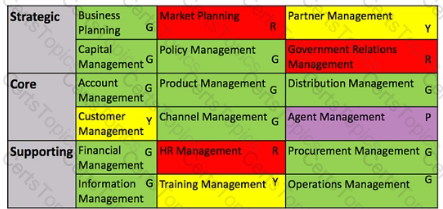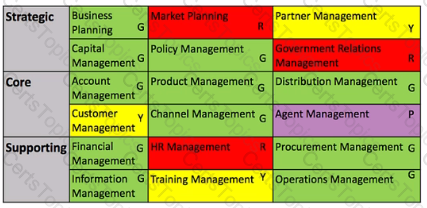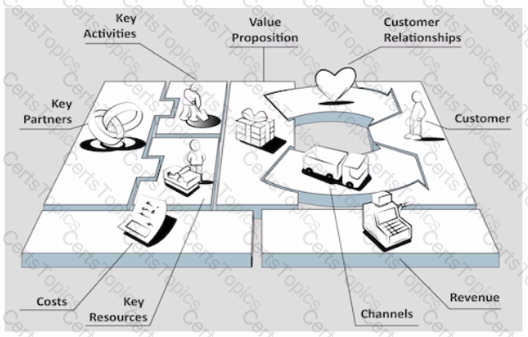Consider the following business capability model. there cells of a model are given different colors to represent desired maturity levels (Green (G)- level achieved, yellow (Y) =one level away, red (R) -two more more levels away, purple (P)=missing capability):

Which of the following best describes what this model shows?
Consider the following business capability model, where cells of a model are given different colors to represent levels (note the letters G, R, Y, P also denote the colors used = Green, Red, Yellow and Purple):

Which of One following best describes the technique?
Compete the sentence. An objective of Phase B is to identify candidate architectureRoadmap components based upon______________________.
Which of me following is considered a guying principle when creating value streams?
In which pan of a business scenario are business capabilities and value streams modelled?
Which of the following describes how to define a business capability?
Which Input to Phase B is a document that may form the basis of a contractual agreement between the supplier and consume! of the architecture services?
In ufliai ADM Phase floes the detailed assessment ot business capability gaps occur?
Consider the following representation of a business model:

Which of the following business models is This an example of?